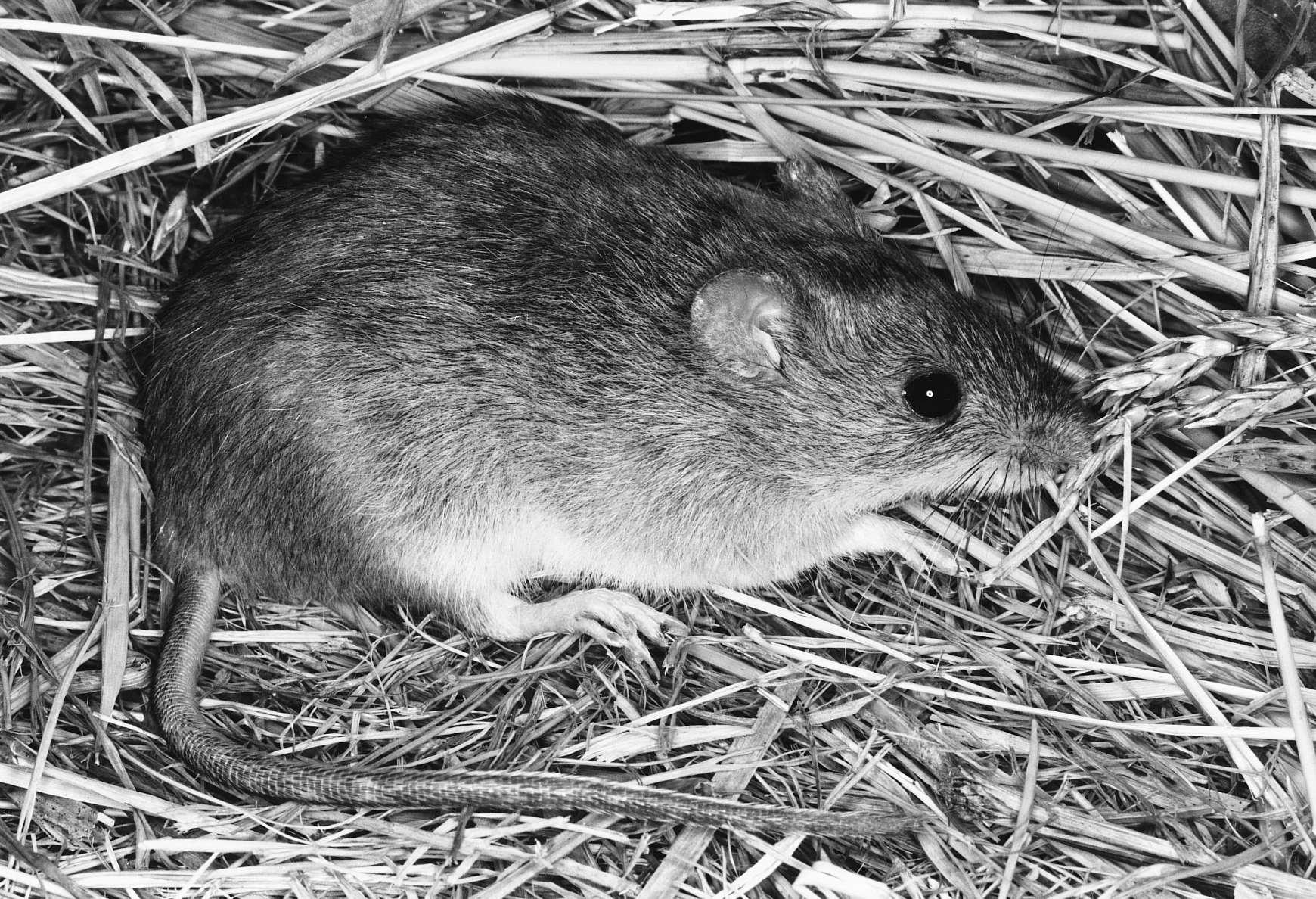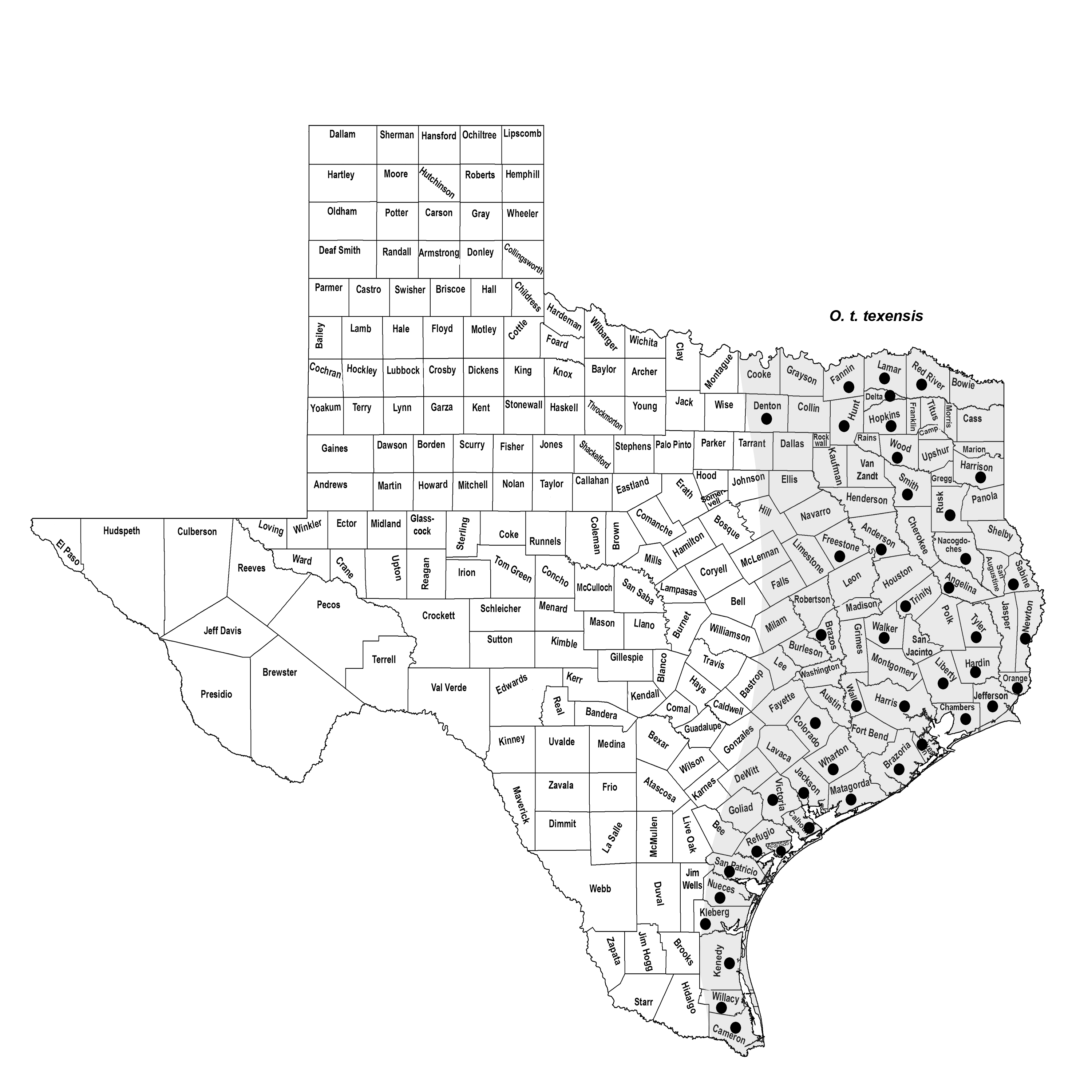TEXAS MARSH RICE RAT
Oryzomys texensis J. A. Allen 1894
Order Rodentia : Family Cricetidae
DESCRIPTION. Rat-like, with long, nearly naked, scaly tail; ears short and hairy; upperparts grizzled grayish brown, heavily lined with black, especially in winter pelage; underparts whitish. Dental formula: I 1/1, C 0/0, Pm 0/0, M 3/3 × 2 = 16. Averages for external measurements: total length, 245 mm; tail, 116 mm; hind foot, 29 mm. Weight, 40–68 g, averaging 51 g.

DISTRIBUTION. Found throughout the eastern part of Texas, west to Denton and Lee counties and then southward at least to Hidalgo and Cameron counties. This species formerly was included as O. palustris; see "Remarks."

SUBSPECIES. Oryzomys t. texensis.
HABITS. These rats typically inhabit marshy areas, but they may be found in almost any situation where grasses and sedges offer an adequate food supply and protective cover. They are semiaquatic and do not hesitate to swim or dive to escape capture. Near Copano Bay their runways are so situated in salt grasses and sedges that the rats have to travel in shallow water most of the time. In southeastern Texas, the rats are common on dikes and levees thrown up in the coastal marshes. In inland areas, they prefer marshes and moist meadows; occasionally they live in forested areas.
Their surface runways resemble those made by cotton rats. They are 5–8 cm in width and lead from shallow burrows or surface nests to feeding areas. The globular nest is composed of grasses, sedges, or weeds and frequently is placed under debris above high water in emergent vegetation. They occasionally usurp and remodel for their own use the nests of blackbirds.
The Texas marsh rice rat is omnivorous, with about equal amounts of plant and animal matter making up the diet, although the type of food eaten varies with season and availability. Plant foods include green vegetation, fungi, and the seeds of sedges, marsh grasses, and rice. Animal foods include insects, fiddler crabs, snails, fish, and the carcasses of small rodents and birds. Because of their preference for cultivated rice they were named rice rats. In most places, these rats do no damage, but in rice fields they may become economically important by consuming large quantities of rice.
This is a prolific species. The breeding season is nearly yearlong, during which time breeding females may bear several litters. A single female may bear five to six litters per year, although suboptimal conditions may restrict reproductive output. Litter size ranges from two to seven (average four) but may be affected by population density, as crowded conditions appear to restrict the number of young produced. The gestation period is about 25 days. A captive female produced six litters, totaling 20 young, in 1 year, an average of 3.3 young per litter. At birth the young are blind, helpless, nearly naked, and weigh about 3 g each. They grow and mature rather rapidly and appear to grow continually throughout their lifetime. Their eyes open on the 5th or 6th day, and they are weaned on the 11th day. Sexual maturity is reached between 40 and 45 days of age.
POPULATION STATUS. Common. The Texas marsh rice rat is common over most of its range in Texas.
CONSERVATION STATUS. The IUCN lists O. texensis as a subspecies of O. palustris and lists it as a species of least concern. It does not appear on the federal or state lists of concerned species. The continued loss of wetlands habitat could place it in jeopardy in the future.
REMARKS. This species formerly was recognized as O. palustris. In 2010, John Hanson and RDB at Texas Tech University used DNA sequence data to determine that O. palustris actually represented two species of rice rats. Rice rats occurring in Alabama and to the east were recognized as O. palustris, whereas rice rats distributed in Mississippi to Texas were referred to O. texensis.
From The Mammals of Texas, Seventh Edition by David J. Schmidly and Robert D. Bradley, copyright © 1994, 2004, 2016. Courtesy of the University of Texas Press.
Natural Science Research Laboratory
-
Address
Museum of Texas Tech University, 3301 4th street, Lubbock, TX 79409 -
Phone
806.742.2486 -
Email
nsrl.museum@ttu.edu

